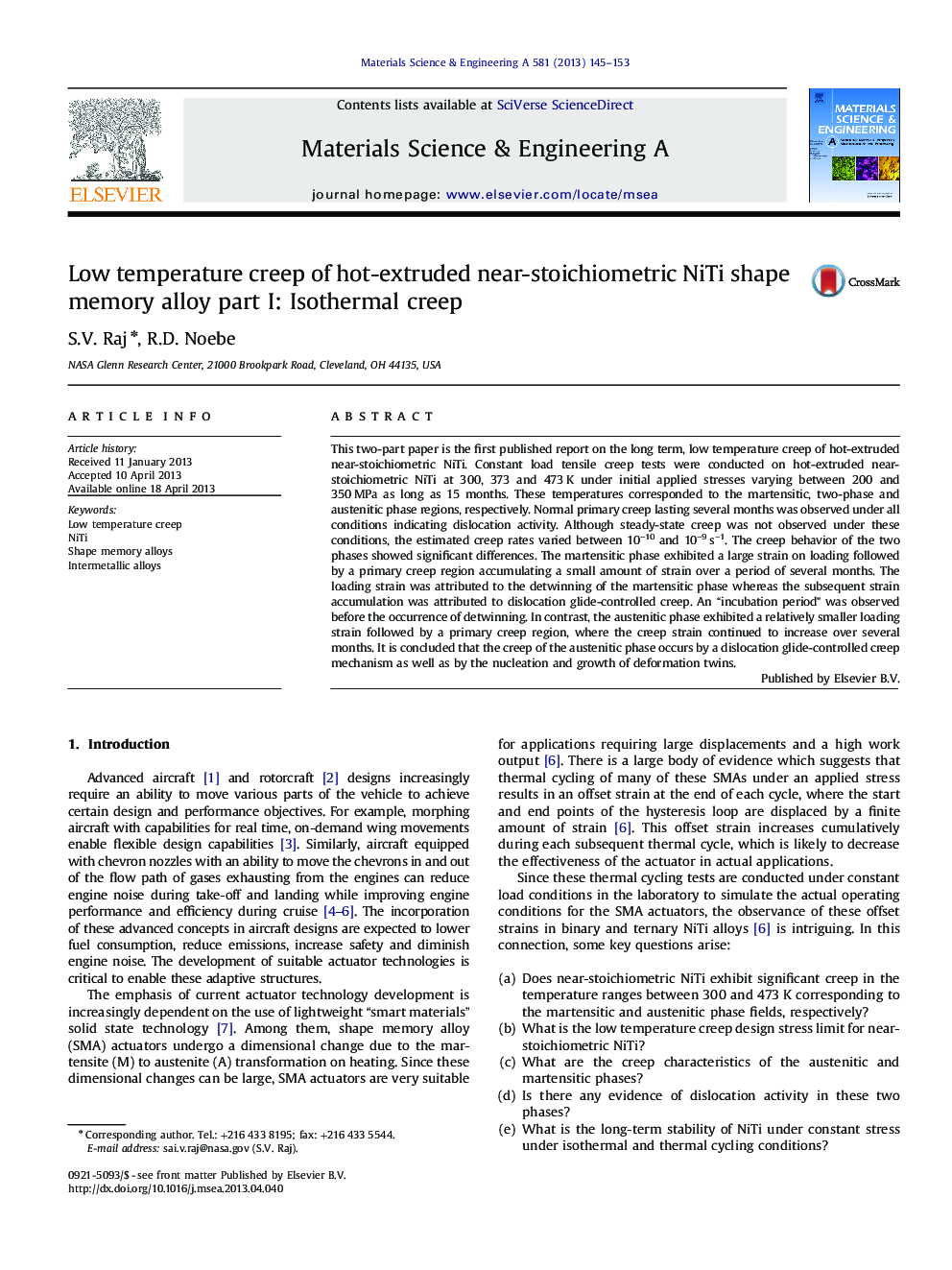| Article ID | Journal | Published Year | Pages | File Type |
|---|---|---|---|---|
| 1575903 | Materials Science and Engineering: A | 2013 | 9 Pages |
Abstract
This two-part paper is the first published report on the long term, low temperature creep of hot-extruded near-stoichiometric NiTi. Constant load tensile creep tests were conducted on hot-extruded near-stoichiometric NiTi at 300, 373 and 473Â K under initial applied stresses varying between 200 and 350Â MPa as long as 15 months. These temperatures corresponded to the martensitic, two-phase and austenitic phase regions, respectively. Normal primary creep lasting several months was observed under all conditions indicating dislocation activity. Although steady-state creep was not observed under these conditions, the estimated creep rates varied between 10â10 and 10â9Â sâ1. The creep behavior of the two phases showed significant differences. The martensitic phase exhibited a large strain on loading followed by a primary creep region accumulating a small amount of strain over a period of several months. The loading strain was attributed to the detwinning of the martensitic phase whereas the subsequent strain accumulation was attributed to dislocation glide-controlled creep. An “incubation period” was observed before the occurrence of detwinning. In contrast, the austenitic phase exhibited a relatively smaller loading strain followed by a primary creep region, where the creep strain continued to increase over several months. It is concluded that the creep of the austenitic phase occurs by a dislocation glide-controlled creep mechanism as well as by the nucleation and growth of deformation twins.
Related Topics
Physical Sciences and Engineering
Materials Science
Materials Science (General)
Authors
S.V. Raj, R.D. Noebe,
